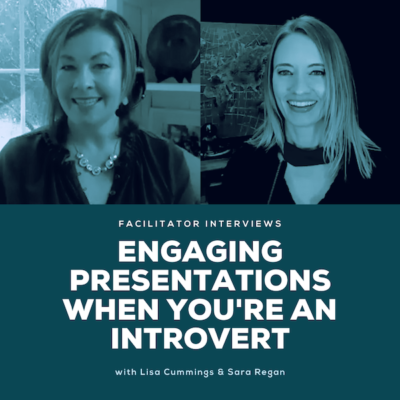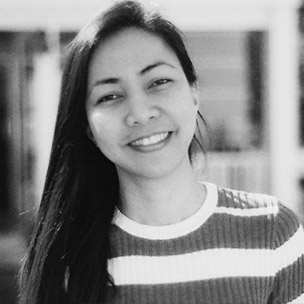Delivering Engaging Presentations When You’re An Introvert
Podcast: Play in new window
Subscribe: Spotify | iHeartRadio | Email | TuneIn | More

Your Strengths Have Everything To Do With Achieving Engaging Presentations
Presenting can be a piece of cake for some, but can be a daunting task for others. But whether you are an introvert or someone who loves to be in front of an audience, how well you can capture your audience really depends on how you use your strengths.
Do you focus on “wow”-ing your listeners with your dazzling approach, or do you focus on establishing genuine connection with them?
Get insights from Lisa Cummings and Sara Regan as they champion strengths in presenting.
Lisa: Hi everyone, it’s Lisa from Lead Through Strengths. Today I am joined by Sara Regan, one of our facilitators at Lead Through Strengths. You've heard a lot from me over the years and it's about time you get some new angles, fresh ideas on strengths, from other people who bring great content to Lead Through Strengths. Sara does just that. If her perspective grabs you, feel free to request her when you book your training events with us.
Authenticity Through Strengths Makes Meaningful Interactions
Lisa: So speaking of work, something that comes up constantly is people who have to do formal presentations, or they just have to present a PowerPoint in a meeting, and they get really in their head about the idea that they're not a professional presenter. They'll say —
“I don't feel like I have charisma and I'm not that colorful, so how do I use my strengths?
"Is it even possible to use strengths in a way to take a skill that I don't think I would be good at — and come at it from a new angle?”
"Can you deliver engaging presentations if you're an introvert?"
What are your thoughts on that?
Sara: I think strengths can give us a lot of insight, certainly into how to do our best work no matter what kind of work that is, including presenting. And my own experience with this is, I had a lot of doubts initially you know given the work that I did which was more one-on-one, or working with small groups or being in meetings. But it's different than being a facilitator, and being the person who is at the front of the room for sometimes four hours, eight hours.
There's a level of energy that's required there and I really did feel like, I thought a lot about personality and what is the presence that's needed, and I did entertain how can I try to do it more like other people who I admired. And at the end of the day, I really just came back to, I have to do it, how I would do it, which is based on my own strengths.
And so for me, the facilitation style I think one of the ones that probably comes through the most is Relator.
So Relator is a theme where I really want to be able to create conditions for people to have a meaningful conversation. I like to keep it real.
And so, I have found that if I show up as my most genuine and authentic self and not to feel as though I have to dazzle or be flashy, but just be real and create an environment where people can let their guard down a little bit, that's what I find works for me. And I feel like teams respond to that as well.
But I am aware that everybody in the room, this may be some Individualization theme as well, but everybody's walking in and they've had a different kind of day, they've got a different story, they have different background. There will be that apprehension or the skepticism, or someone's new in the role and they're wondering, “These are my colleagues, I'm not sure what to share about myself.”
Or there's someone up for promotion and they're wondering, “Gosh, my boss is going to be hearing everything I say about my strengths. What if I'm not communicating this in a way that's going to help me land that job?”
So I feel like I have a lot of sensitivity to that and I like to just get rid of, kind of help eliminate any of those worries, on the front end. So I feel like that's my facilitation style — is to help create the most conditions. And I've had to just embrace it, because I can't be anyone else and if I try, I just don't think it goes as well.
Anxious About An Upcoming Presentation? Consider Strengths-Based Approach And Content Over Dazzle
Lisa: It's true for everyone, isn’t it? I mean, I see so many people come in and they're like,
“Oh, well I have to do presentations now and I, (you've mentioned the word dazzle it always makes me think of), I'm going to dazzle you with my jazz hands.”
Of course, a few people have that style, but if you try to force it, it just looks weird. And then if I think of my experience with you, I mean, even thinking back to the times when I first met you...you make people feel seen. You make people feel like they're the only one in the room. It's a totally different way to give an engaging presentation.
You're a great listener. I bet your Learner and Individualization combine to make you really curious about people. You're genuine and so many people want that over the stereotypical version of charisma.
But for some reason, that thing got out there like, “Oh, you need to be the best dazzler.”
So I love that you live out a style that isn't the one that pops to people's minds, but you can really demonstrate for them, “Look you can present from so many different angles. If you use your strengths, you could have all thinking talent themes. You could lead through Analytical and be the best at taking data and bringing new insights to people through that and stop worrying about the dazzle part. Start thinking about how you could amaze people through the insights you were able to bring and it could be through the content itself.”
So I just think you're a beautiful example of, not the first thing people think of, but they're moved when they're in the room with you and how many teams need a real experience or real genuine experience and how you just are the perfect model of delivering engaging presentations through your unique strengths.
Sara: Well thank you, Lisa.
Lisa: All right, now that you have new ideas, it's your turn to go apply this in your life. Let us know as you begin to claim these talents and share them with the world — what it's like for you, what is hard, what worked well, what you loved about the ideas, and we'll see you on the other side.
Bye for now.
More Resources On How To Make Your Next Presentation Engaging
We've mentioned authenticity a few times here as an important component of a great presentation. We highly recommend you also check out Lisa's previous conversation with Strother Gaines, where he encourages using your strengths to maximize the authentic “you” at work. He's a great example of actually having those aforementioned jazz hands to make engaging presentations. He's doing it genuinely — it's not put on.
If you lead through Communication, you naturally have what it takes to thrive on genuinely interacting with other people, which often results in a highly impactful presentation. So harness it! Your audience will thank you for it.
Another gem of a podcast interview Lisa had was with Michael Port. In this episode, you'll discover how to be self-expressed yet also able to flow from situation to situation with fluency, how to connect with the audience before the presentation, and a host of other useful nuggets. Don't leave the episode without checking out his book Steal The Show: From Speeches To Job Interviews To Deal-Closing Pitches, How To Guarantee A Standing Ovation For All Of The Performances In Your Life. Great resources are also up for grabs if you visit the Steal The Show website.
Carmie is a professional writer and editor at Lead Through Strengths. Having spent 8 happy years with a nonprofit child organization as a storyteller and sponsorship relations team manager, she continues collaborating with others across the globe for the joy of human development and connection. Her days are powered by coffee, curiosities, cameras (film and digital), music, notebooks, and a cat. Where books are home, she’s home. She calls her Top 5 StrengthsFinder Talents “CLIPS” (Connectedness, Learner, Intellection, Positivity, and Strategic)–you know, those tiny objects that hold connected things together. She’d like to think she’s one.

